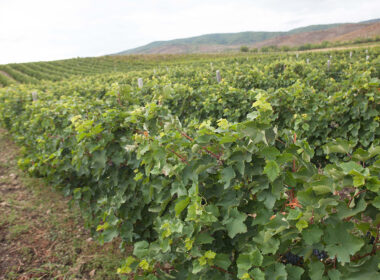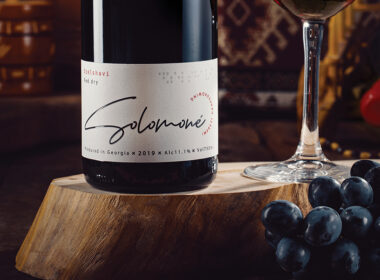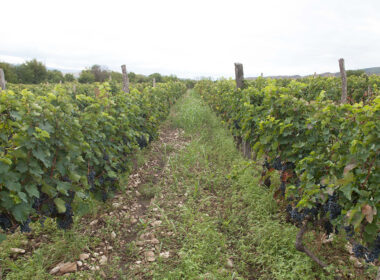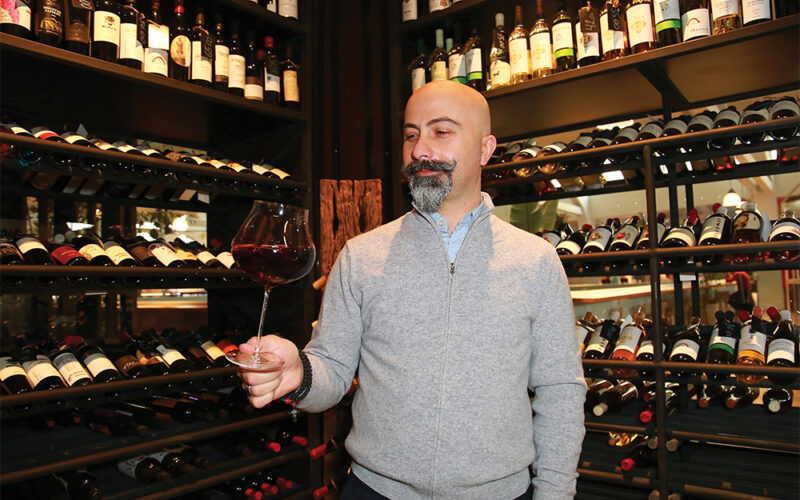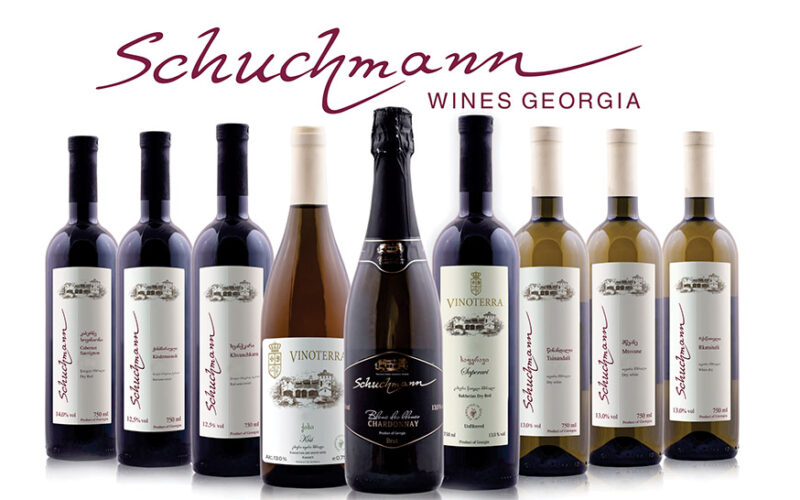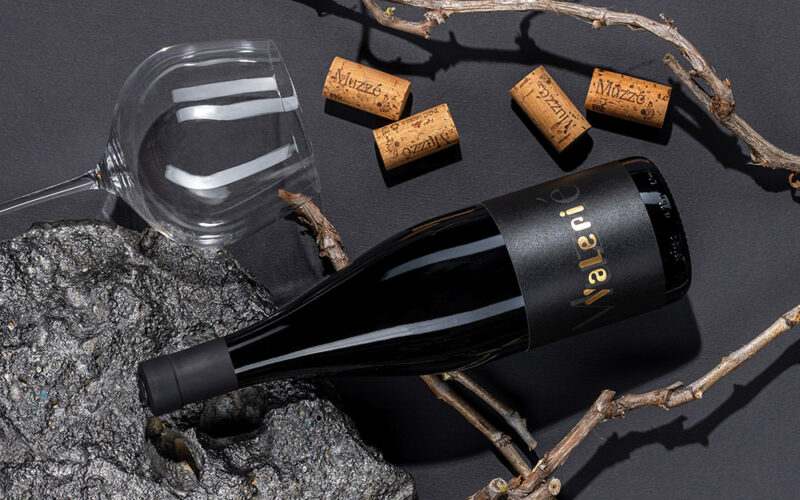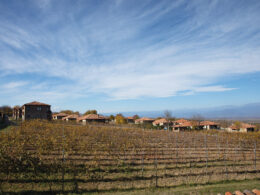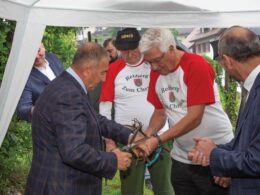Giorgi Samanishvili | Oenologist: Imereti is the second most distinguished region of Georgia after Kakheti, by vineyard area, wine character, and history of viticulture. Imereti is separated into three parts: Zemo Imereti (Upper Imereti), situated in the ravines of rivers Chkherimela, Dzirula, and Kvirila; Shua Imereti (Middle Imereti), left and right banks of the river Kvirila and its tributaries; and Kvemo Imereti (Lower Imereti), the ravine of the river Rioni, up until Tskhenistskali.
Much like all of Western Georgia, Imereti is influenced by the Black Sea and has a mild, humid, and sub-tropical climate. Consequently, local grape varieties have longer vegetation periods. As I already mentioned, Imereti is divided into three parts, Zemo, Shua, and Kvemo. In Zemo Imereti, the soils are rich in limestone, the vineyards are planted on the slopes, and the harvest is scarcer, but the wines are more concentrated, with low alcohol and high acidity. In ancient times, Zemo Imereti was known as the region of sparkling wines.
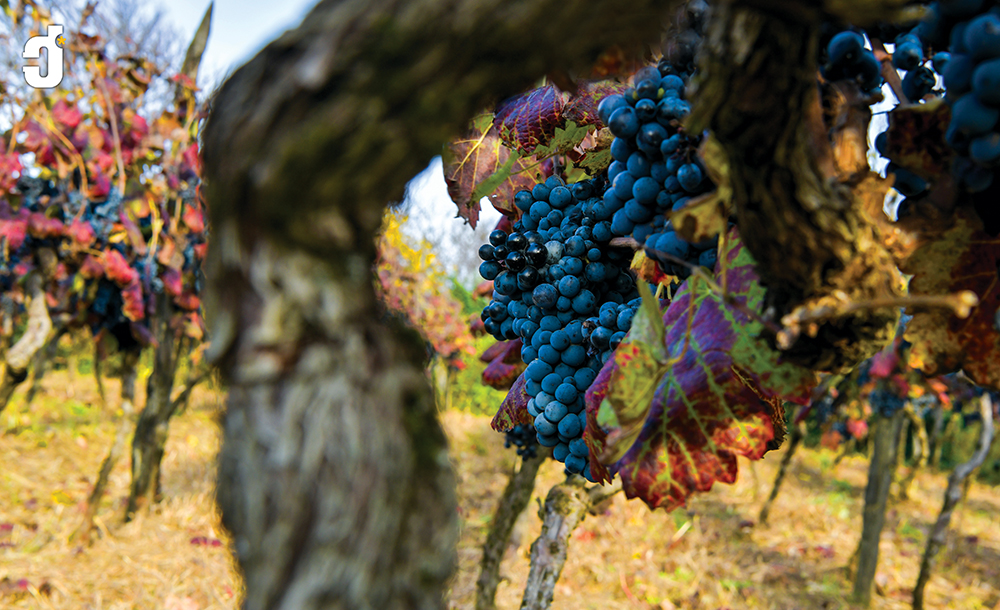
Levan Ujmajuridze | Professor, director of the LEPL Scientific-Research Center of Agriculture: This stereotype is slowly breaking, due to climate change. If up until now, there were only materials for sparkling wine and low-alcohol, highly acidic wine production in Zemo Imereti, now due to global warming, the vertical zoning has shifted upwards and it is already possible to produce all types and categories of wine, which is so important for this region.
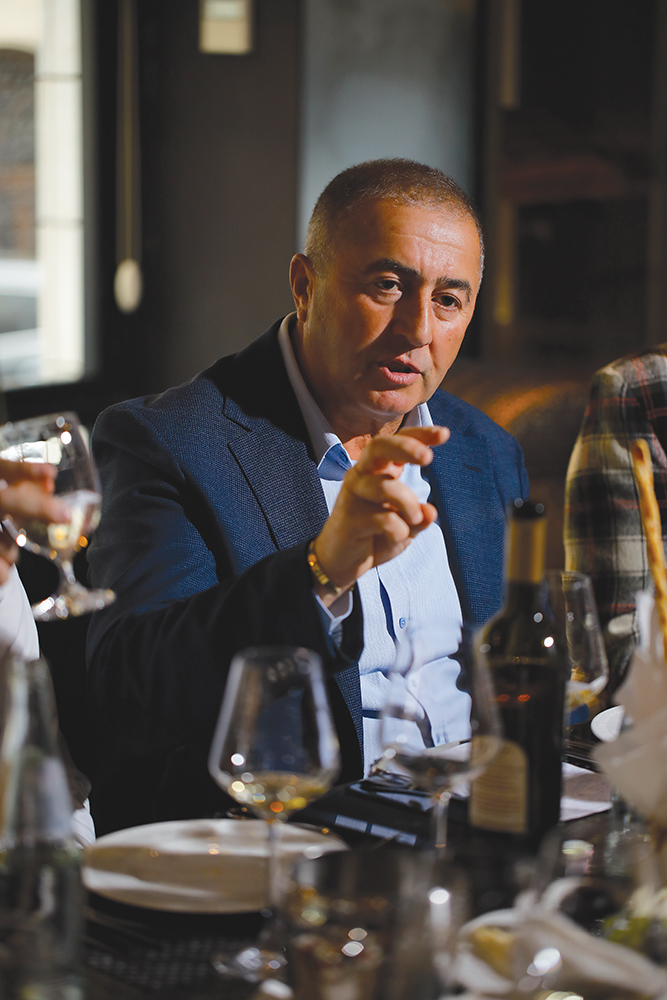
Giorgi Samanishvili: I think the Soviet times hurt Imereti, focusing largely on sparkling wines. When the sparkling “boom” ended, Zemo Imereti, the region that specialized in sparkling wines, found itself in a challenging situation. Sadly, there is so much potential to make high-alcohol, high-acidity wines, from very ripe grapes here.
Zemo Imereti is the perfect representation of the diversity of Imeretian grape varieties. Thankfully, we are already witnessing the development of viticulture in the region. As Shua Imereti develops, so will Zemo Imereti, with its riverside soils, slopes, and hills.
If it wasn’t for the negative impact of the Soviet Union, we would have up to 50 PDOs registered in Imereti, and the first one would be Sakara, where the first research center and a laboratory were established.
Levan Ujmajuridze: All of it is connected to Vladimir Staroselski, a Polish patron of the arts, who established the first scientific institution, helped plant the first collection vineyard of Georgian grape varieties (Zestafoni, v. Sakara), and created a phylloxera committee of the Caucasus. Phylloxera had just entered West Georgia: it was first uncovered in 1881, in Abkhazia (Sokhumi), and spread to Samegrelo, Guria, Adjara, Imereti, Kartli, and reached Kakheti in 1906.
Giorgi Samanishvili: Fortunately, Georgia already knew about this disease and its spread in Europe, so we were prepared. The 500 endemic varieties, their regions, and the vineyard area were described during the same period.
To revert to the subject of the PDOs, we would certainly have Chkhari, Sazano, Simoneti, and many more zones apart from Sakara, on the right bank of the river Kvirila in Shua Imereti. All of them can be found in ancient scriptures, and all are very distinct from one another by their varietal composition. We also have Kitskhi (Zemo Imereti), Puti-Ilemi micro-region, Kvaliti, Sviri, Obcha, Dimi, and Persati on the left bank of the river Kvirila. We have Vani in Kvemo Imereti, which is an exceptional winemaking micro-region. And let’s not forget Okriba and Derchi micro-regions.
Levan Ujmajuridze: It is very important to taste the wines at the place of their origin. A couple of years ago, we tasted wine made from rare grape varieties together with our foreign guests (I mention this story in my book as well); one of the guests was Mr. Peters from France, and this is what he wrote to us upon returning to his homeland: “Thank you for organizing a wonderful wine tasting. For me, as a fifth-generation champagne winemaker, it was an extraordinary experience. It was a chance to stop time, to find the origin of the vine and wine and the birthplace of culture.” Among the wines that our guests tasted were Kapistoni Tetri and Kundza. “Kapistoni and Kundza, or Chardonnay and Sauvignon?” – they were wondering.
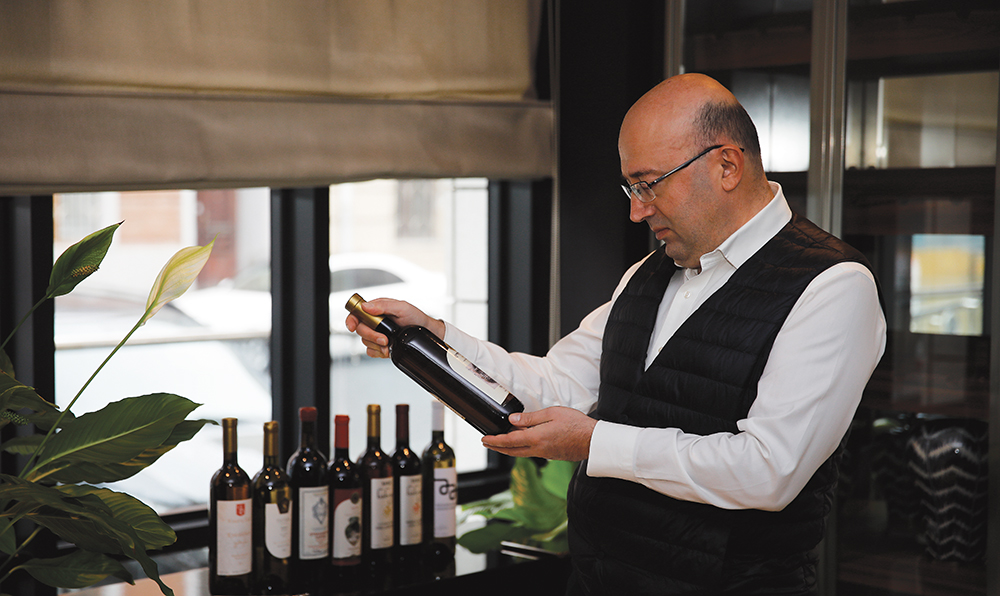
Levan Mekhuzla | Chairman of National Wine Agency: When great winemakers and specialists from Bordeaux or Burgundy come to Georgia and see our country and taste the wine, they completely change their perception, because they see the great potential that Georgia has. Imereti is one of its outstanding parts.
Giorgi Samanishvili: Plus, authenticity is well-preserved in Imereti.
Levan Mekhuzla: Having two distinct winemaking regions of East and West Georgia is our added advantage.
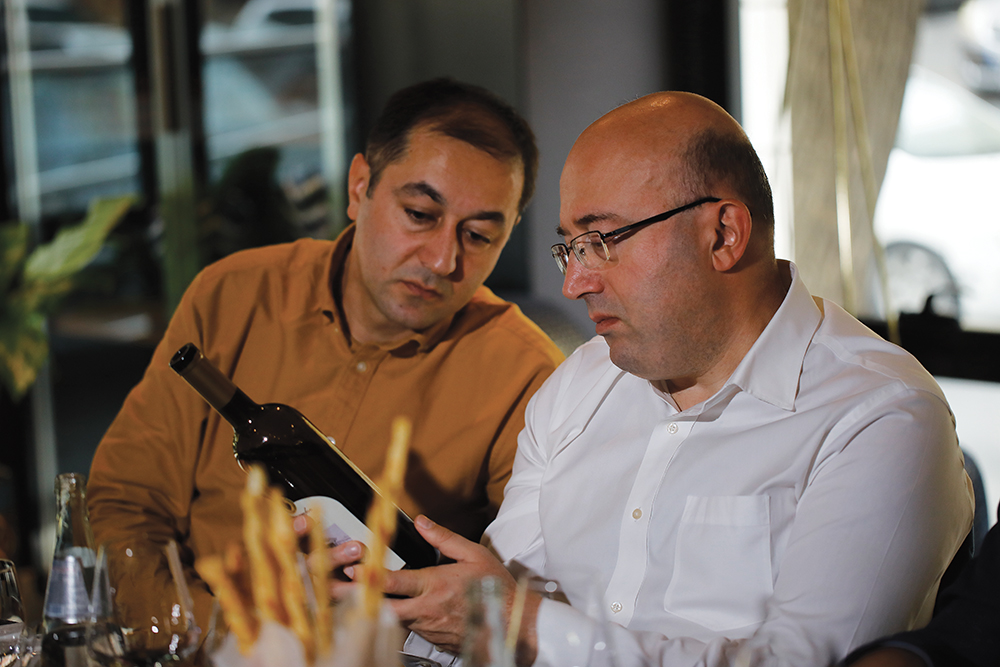
Kakha Tchotiashvili | “Tchotiashvili Family Vineyards”, Winemaker: And West is more diverse. I toured Imeretian wineries last summer, and I was astonished: even neighboring villages make wine differently, some use more chacha, some less, the aging time in churi is also different. Every winemaker has their approach and it translates into wine. When I tried wine from Zemo Imereti, I had the impression that I was drinking Austrian or German wine. I came back a different person. I am planning to return this summer as well.
David Chichua | LEPL Scientific-Research Center of Agriculture: We have to look at Imeretian varieties in two ways: first in the context of varietal diversity, and second in the context of terroirs. For instance, why should Tsitska be the dominant variety? Not because of its rarity or its name. We have to look at the location where a particular variety makes a balanced wine, without harsh structures and high alcohol; where is Tsitska’s tanginess unacceptable, and where is it desirable.
Rare varieties give us the possibility to round the sharp corners in the final product. For instance, adding varieties that are milder and less acidic (let’s say Tsirkvalis Tetri or Rko Tetri), is a great way to balance some of the sharpness. Using these varieties always gives a winemaker a chance to turn negatives into a positive, and get a well-rounded, complete wine.

I also want to touch upon restricting the varieties to specific regions. It is still a very challenging topic. These restrictions were never our tradition. A good example is Goruli Mtsvane: this variety is adapted to have a short vegetation period because it accumulates sugar very fast (Khashuri, Kareli, Gori), but the same variety develops a rather interesting characteristic over a longer period of growth in Western Georgia, particularly in Zemo Imereti (Kharagauli). Goruli Mtsvane is perfect for winemaking at the end of November in Jighaura. So, what advantage does longer ripening give this variety? If we compare the grape grown in Kartli in a short time, to Goruli Mtsvane harvested in October or the end of November, we will see that the tannins are milder and more harmonious.
Levan Ujmajuridze: There is a certain similarity with Khikhvi: it is hard to make aromatic dry wines from Khikhvi in Kakheti, due to the high concentration of sugar in the grape in the short amount of time. At the same time, the organic compounds that define the quality and varietal characteristics of the product do not have time to develop, therefore Khikhvi grown on higher altitudes makes a better white dry wine. The same can be said about Meskheti, despite its vertical zoning, wine made from Khikhvi grown in this region is magnificent.
David Chichua: Goruli Mtsvane is known as Kvishkhuri in Imereti, and is considered one of the cult varieties. I think that Kvishkhuri in Imereti is a very Imeretian variety, and it can exist under this name. We should not criticize the producer, thinking they are misleading the consumer, when they use a synonym instead of the name of the variety. This variety grown in Imereti is distinctly different from Goruli Mtsvane grown in Kartli, and so is the wine. I know this is not ampelographically correct, but the name on the label should be the name they use in the region.
Levan Ujmajuridze: And it should be the name of the wine and not the variety.
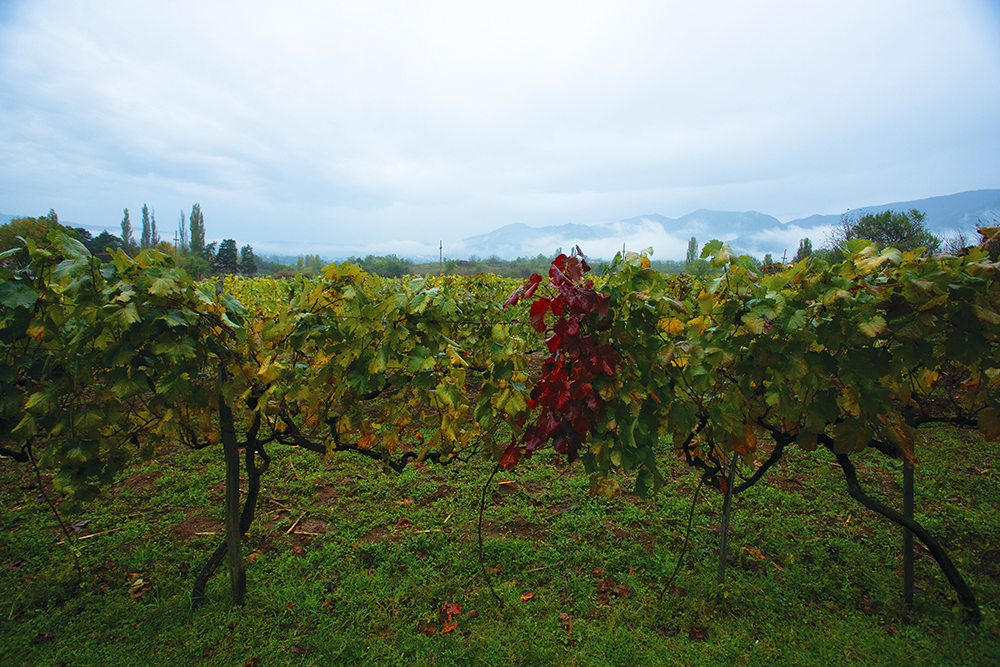
David Chichua: As for other Imeretian varieties, such as Krakhuna, Tsitska, and Tsolikouri – there is more knowledge about them outside the Jighaura Research Center. That’s why I often say that it is more appropriate to taste wines in Imereti to evaluate these varieties. As for Kundza and Kapitsoni Tetri – there is more information about them in Jighaura, where many years of observation and balancing of contingencies related to vinification and vintage take place. Both Kundza and Kapistoni Tetri deserve to be fully restored in Imereti. I can say the same about an interesting and rare variety Dondghlabi.
Levan Ujmajuridze: We have three variations of Dondghlabi. Dondghlabi (Mchknara) and Dondghlabi Shavi are mainly used to make wine and brandy, while Dondghlabi Mtsvane yields a very interesting and attractive wine.
David Chichua: Everyone associates Imereti with delicate, aromatic, tart white wines, but we should not forget the potential that red varieties of the region have. Imeretian Otskhanuri Sapere is no less impressive than Usakhelouri, Aleksandrouli-Mujuretuli from Racha, or Ojaleshi from Samegrelo. Otskhanuri Sapere is rather interesting when dominating in combination (coupage) with lighter Mgaloblishvili, Dzelshavi, or Adanasuri. These varieties can be used to undercut the roughness and high acidity of Otskhanuri. On their own Mgaloblishvili, Dzelshavi and Adanasuri make great, light summer red wines.
Red Imeretian varieties are perfect for making rosé, especially the ones that are characterized by Aladasturi aromas (Aladasturi has a very distinct taste that cannot be confused with any other wine). These aromas pair well with Rko Shavi, Kvelouri, and Vanis Chkhaveri – excellent Imeretian varieties for both dry and sparkling wines.
Levan Ujmajuridze: The first interesting discovery we made, when we found and planted forgotten Imeretian varieties in Jighaura’s collection plot, was Kundza. It was a harmonious wine, with a distinct taste. The next was Kapistoni Tetri, with a cheerful taste and mild aroma, which still needs to be studied. The name Kapistoni unites several varieties: Kapistoni Tetri from Imereti, Tetri Kapistoni from Racha (these two are very different), and Tsitsiliani Kapistoni (red) also from Racha.
Mirian Iosebashvili | “Mirianis Marani”, Winemaker: We discovered several Kundza vines in the vineyards that my grandfather built. We have a second name for this variety – Kumsi. People in Imereti sometimes also refer to it as Mtsvane.

David Chichua: Incidentally, Kundza is also grown in Kartli, the village of Mejvriskhevi, and we can see interesting results there. However, this variety is most common in Gori.
Mirian Iosebashvili: We are the only ones that have this variety in Imereti. Before planting it, I read everything I could find about it, and I asked around; in the end, I found some in my grandfather’s old vineyard, but a few of them survived because the vineyards were quite old – 68 years old in fact. While waiting for the new plants to grow, I made wine from that vineyard in 2016. I used the European method first, then, the second year I added 20% chacha, and followed up with 50% chacha in 2018 (I got a full-bodied wine that lost all of its Imereti-ness). I experimented for a while until I found the best technology for this variety, and that’s what I brought for tasting today. This year we produced 2000 bottles. It is fermented on 10% chacha, which means it reclaimed its Imereti-ness.
Giorgi Samanishvili: Or one puti (pood) per sapalne (load), as they say in Imereti.
Mirian Iosebashvili: Yes, they also say a batmani per sapalne (batmani is a weight measure in Imereti and equals 10 kilos. Sapalne is 100 liters. 100 litres/1 sapalne and 10 kilos/1 batmani).
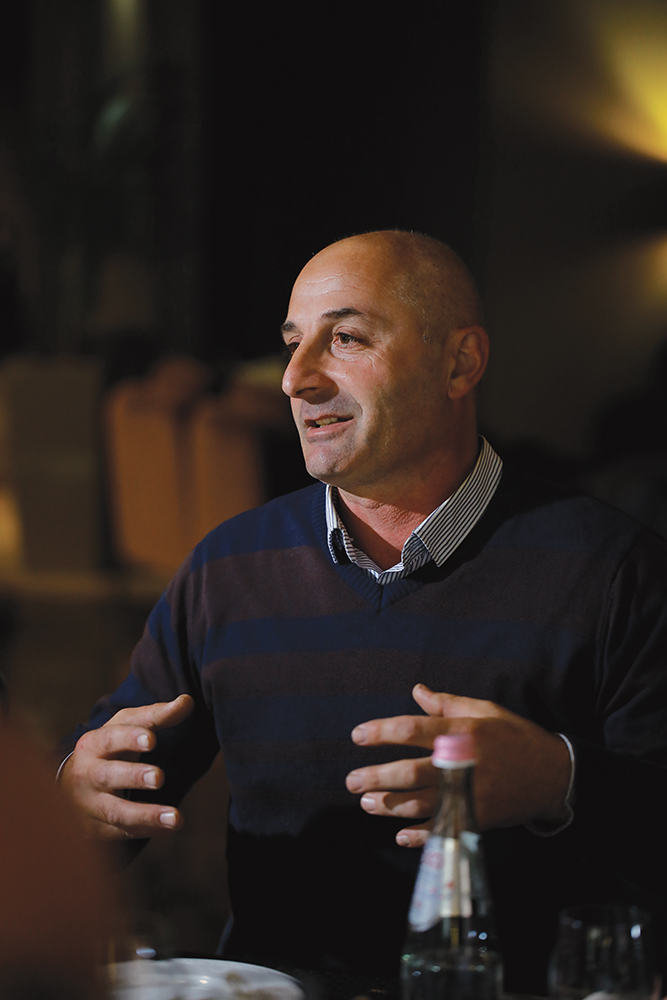
Gia Chubinidze | Nanua Winery, Wine cellar keeper: Another unit of weight measure used in Imereti was puti, and a unit of liquid measure – chapi. Churi was also measured in chapi, because this vessel was not solely used for wine in the region. Each family had one or two churi used for marinades, cheese, seeds, and sprouts.
Giorgi Samanishvili: In my childhood, my grandfather used grape berries to count the liters of grape juice that my brother transferred from the winepress to churi.
Levan Ujmajuridze: Mirian, you are doing such beneficial work. First, you built a new vineyard from the shoots and roots of the 68-year-old vineyards, and second – you have enough of this variety. We know that when the variety and its wine become known, the demand for the plant itself increases, and you have a very good base for the development of the nursery.
One of the positive qualities of wine made with Imeretian varieties is its ability to acquire varietal characteristics with aging, which is not prominent in varieties of other regions. These wines have great aging potential. Prof. Konstantine Modebadze wrote that 20-year-old Tsitska revealed its varietal characteristics more. A lot of Imeretian varieties were forgotten during the Soviet Union when the quality of the wine did not matter. The two main varieties were: Tsolikouri in Western Georgia and Rkatsiteli in Eastern. Why Tsolikouri? Because it is a high-yield variety that adapts to many types of soil.
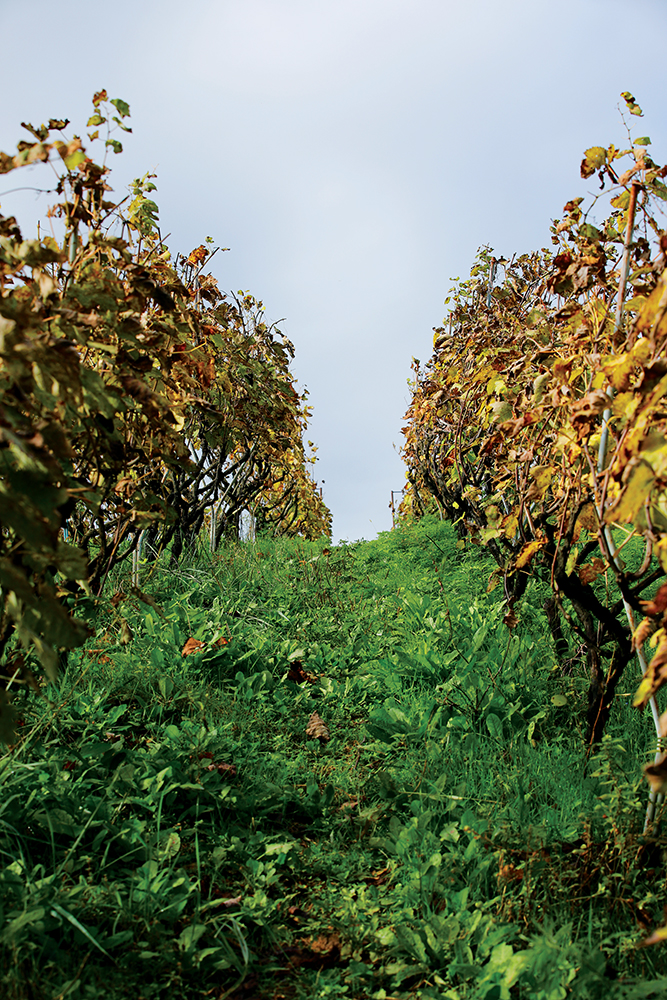
There are 6 names for Tsolikouri: the main variety, or Tsolikouri (Synonyms: Obchuri, Obchuri Tsolikouri, Melkos Tsolikouri, Kvemouri Tsolikouri, Tsolikouri Kokhidzis), followed by Tsolikouri Mskhvilmartsvala and Tsolikouri Ovalurmartsvala (Synonym: Tsolikouri Grdzelmartsvala), which are the variations of the main one. Then we have Tsru Tsolikouri, Tsolikouri Umosavlo (Synonym: Tsolikouri Mtsvivani) and Tsolikouri Mtsvivani. Others include Bazaleturi Tsolikouri (Synonym: Mtsvane Tsolikouri), which gets its name from v. Bazaleti, in Kharagauli region. Bazaleturi Tsolikouri is a completely independent variety, and it is not associated with the Tsolikouri variety.
To this day, 74 Imeretian varieties are accounted for. This region is the second by varietal diversity, after Kakheti. Despite having large territories and many varieties, the share of these varieties is quite small. The region is mainly focused on Tsolikouri, Krakhuna, and Otskhanuri Sapere. Kundza, Kapistoni Tetri, Kamuri Tetri, Tsirkvalis Tetri, Adanasuri, and Mgaloblishvili are very rare to find. For example, the Mgaloblishvili grape variety is not only interesting in Georgian reality but is so unique in its properties that it receives the attention of world scientists. This variety is resistant to diseases and drought-resistant, which is especially important today when we are faced with climate changes caused by global warming.
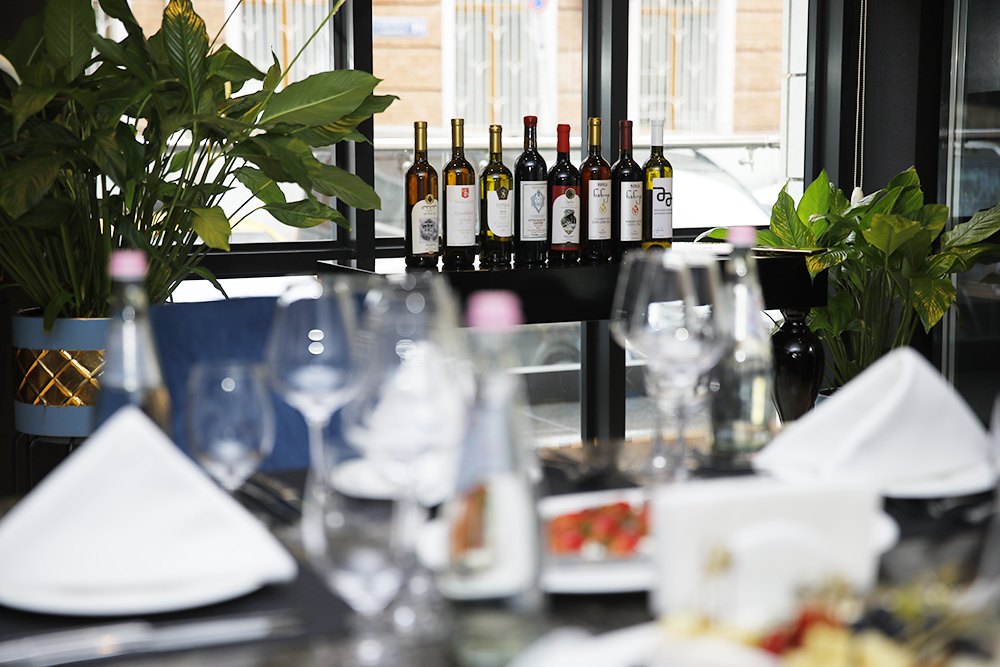
Dzelshavi from Obcha and Sachkheris Dzvelshavi are more widespread in the region (Zemo, Shua, and Kvemo Imereti) among the red grape varieties. These two varieties are independent of each other.
Despite the soil and climatic conditions, as well as the varietal diversity of grapes, Imereti region suffers from a lack of PDOs. In such a large region, we have only one PDO microzone – “Sviri”, which is undoubtedly a problem and needs to be duly corrected.
Levan Ujmajuridze: Kamuri Tetri from “Nanua” is one of the wine samples presented at today’s gathering. It is a grape variety from Guria but was grown in Imereti since time immemorial. Kamuri Tetri grape was consumed and used to make wine. Today, only some winemakers grow this variety in Imereti. Gia Chubinidze is one of them, and it is his 2019 vintage that we are tasting today.
Gia Chubinidze: Kamuri Tetri is very special. I grow up to a hundred foreign and local varieties, but none have the prolonged and strong bunch as Kamuri Tetri. It would grow on trees in the old days. Its sugar content can sometimes reach 27. The wine that we are drinking today is made from 50% Kamuri Tetri and 50% Tsitska.
Giorgi Samanishvili: It is an excellent sample. I think it will also be interesting commercially.
Kakha Tchotiashvili: It is very different as well. Once you taste it, you will surely remember its distinctly dry aromas. I am merely a taster of Imeretian wines but participated in their making. I’ve worked with Tsitska, Tsolikouri, Krakhuna, and Otskhanuri Sapere. I even consulted one of the local wineries. I’ve been working with wine since 1999, but when it comes to varieties, I always say I am a novice because I always want to know more about various varieties from different regions of Georgia. There are a lot of interesting discoveries ahead in terms of Imeretian varieties and Imeretian wine.
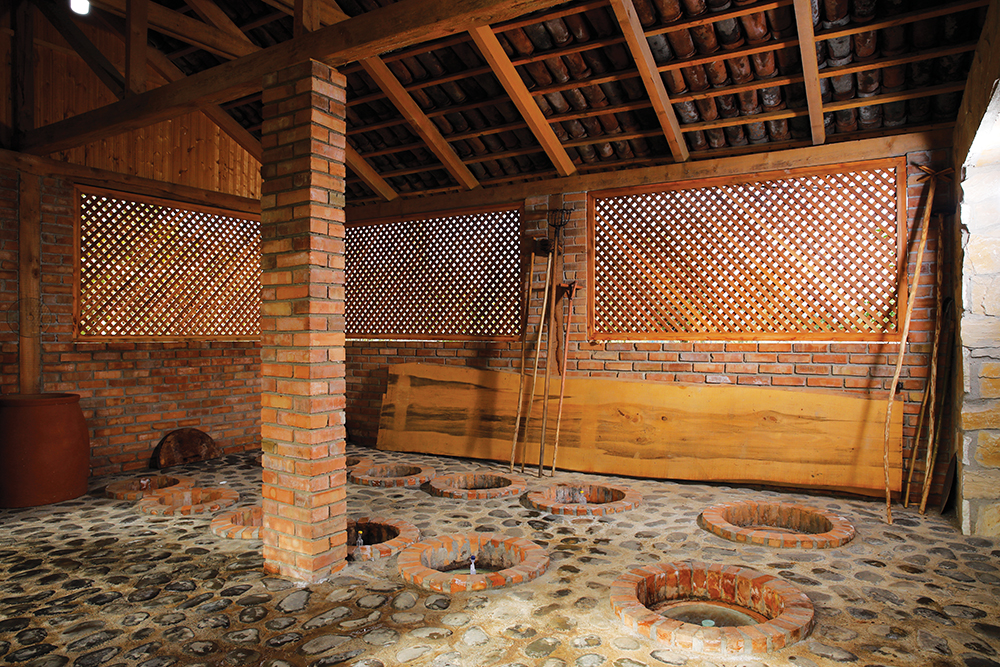
A small winery means there are several generations involved in the process. The joy of each generation is inevitably reflected in the wine. I always say that these wines should be tasted at the place of their making.
Mari Devidze | Executive director of DMO Imereti: I am ecstatic to be sitting in the center of Tbilisi today with all of you, and talking about Imeretian wine. It is already a big victory for me and my team. This is part of a greater goal, for which we visited each Imeretian winery, discovered unknown and very promising winemakers, and helped them become known, get more knowledge and combine ancestral traditions and new technologies in winemaking, present their wines at various competitions and festivals.
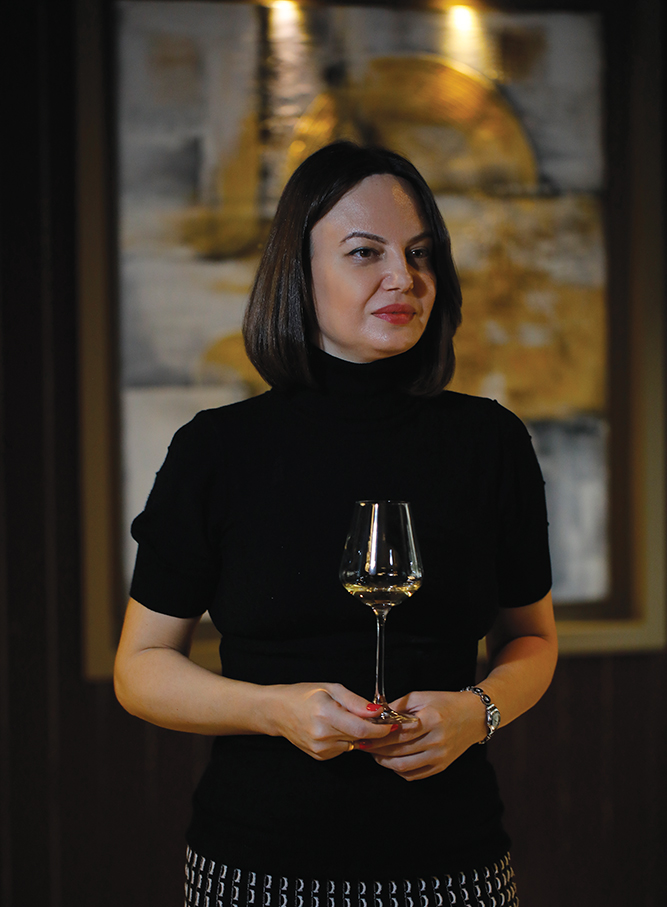
We want to raise awareness of Imeretian wine within the country and abroad. Our idea is to turn one of the outstanding regions of Georgian wine – Imereti – into an important wine tourism destination along with other tourist destinations.
Besides the peculiarities of Imeretian wine that you describe in professional terms, they have an old and interesting history, which we enrich with individual stories of modern winemakers and each bottle produced in their cellars. Our wish is for the quality of the Imeretian wine to be in harmony with the unique story behind it.
Wine tourism popularization was a natural occurrence for Kutaisi who one day realized that it was a tourist city. There is an international airport nearby, with direct flights to and from Europe. So upgrading the infrastructure and developing interesting offers became the priority. We went an educational route – developed training programs for guides, tourist companies, and representatives of the wine industry. We established the Imeretian Wine Association which carries out many educational programs and conducts trainings. Last year, we also held an Imeretian Wine Competition. All of this gave us effective results that we are planning to replicate.
Imereti is the only region in the whole country where you can actually “touch” ancient Georgia. The Golden Age of Georgia is connected to this region – David Aghmashenebeli, Queen Tamar, important and transformative changes in science and culture. Unique Imeretian wine and gastronomy are a constituent part of this culture.
Our region, and especially Kutaisi – a gathering point of all that is Imeretian, has made a great contribution to the development of important areas of Georgia. This makes us very proud.
Imeretian way of making wine
Mirian Iosebashvili: My grandfather preferred natural wines. Besides churi, he made wine using demijohns. Kutaisi was one of the biggest markets for wine in his days and wine in demijohns was a special phenomenon, which was synonymous with high quality in Imereti. My grandfather had 450 20-liter demijohns. We still have 250 of them. He used only one qvevri to store the grape juice after the press. He left it to ferment for one day (we called it “filtration”), and then transferred the liquid to the demijohn bottles, where it continued fermenting, without chacha.
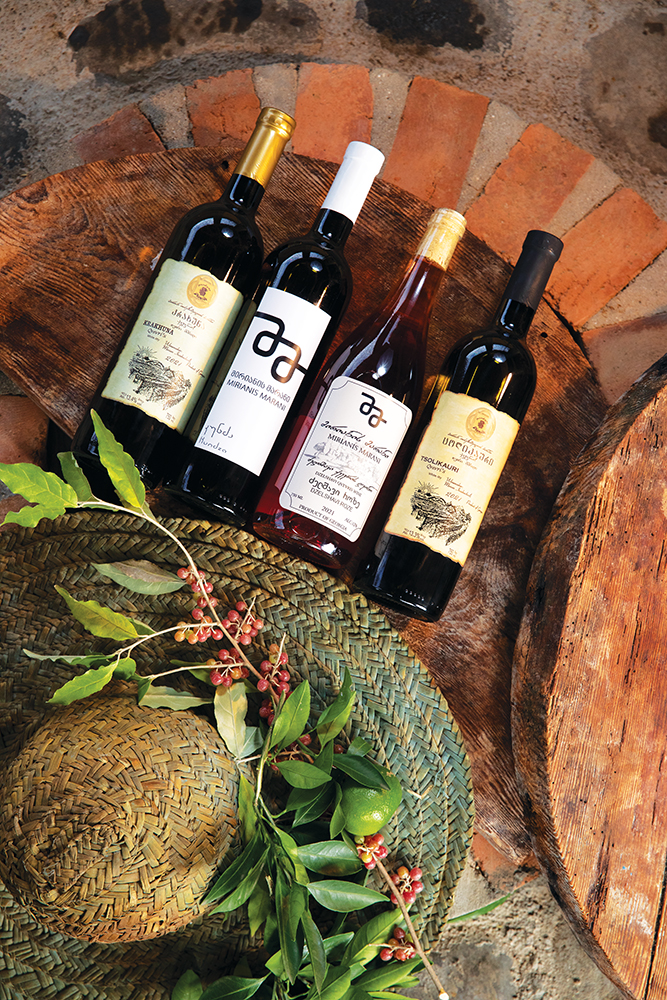
Today, I have two wine cellars – an old one, from my grandfather, with 200-year-old qvevris, and a new one. I make wine using the traditional Imeretian method. What this method entails is using 10% to 30% of chacha. My grandfather told me (and his grandfather told him) that one sapalne of juice needed one batmani (10%) of the best chacha. Since this approach withstood time, I use it to make my white wines. It is possible to increase the amount to 30%, but not more if we want to preserve the qualities that make it an Imeretian wine.
First, I pour grape juice into a clean churi, add 10% chacha and seal the vessel as soon as the fermentation ends. I open it on the Old New Year (January 14). This was also my grandfather’s tradition, to celebrate the Old New Year with new wine.
Giorgi Samanishvili: According to historical sources and ethnographic scriptures, Imereti had its way of making red wine: first the grapes would be mechanically pressed in a winepress, where it went through a 2-day fermentation. The liquid would then be transferred to the churi.
Gia Chubinidze: Most people in our area plant quince trees around churi. We “scrape” qvevri with a couple of quince fruit, while cleaning.
Mirian Iosebashvili: Yes, this is a long-standing tradition. Quince tree has an excellent shade and its roots don’t damage the qvevri buried close by.
Levan Ujmajuridze: Gatherings like this one today, are crucial because we discuss Georgian varieties and wines from a regional perspective. Our main message to the world will always be our varietal diversity and qualitative characteristics that are inevitably connected to a location, soil, and winemaking technology. Homeland of Wine contributes so much to raising awareness about these topics.
Imereti, rich in its history and traditions, is a distinguished region of viticulture-winemaking in Georgia and is once again on the route to prosperity. Traditional varieties such as Tsitska, Tsolikouri, Krakhuna, and Otskhanuri Sapere are being revived. These varieties will always have a special place in Georgian viticulture-winemaking, as well as outside its borders. They are also grown in Eastern Georgia. If we look at the history of development, we will see that our varieties traveled to the Middle East, then the Mediterranean, Asia, and Europe, just as European varieties traveled to Georgia. Therefore, there is nothing wrong with growing Imeretian varieties in East Georgia.
Giorgi Samanishvili: Imereti will still be considered the birthplace of these varieties.

Levan Ujmajuridze: The varieties have to be properly selected though especially when it comes to changing the region or even the country. Tsitska, Tsolikouri, Dzelshavi, and Krakhuna are magnificent varieties, but do they have to be grown in every municipality? They will give us a great harvest, but will they have the right quality of grapes? Location, soil, and grafting stocks need to be carefully selected. We will get the desired quality only when we have a homogenous crop. A lot of work has already been done, but there is still so much ahead.
Organic viticulture-winemaking is developing in Imereti, along with traditional ways of growing grapes and making wine. For example, Mgaloblishvili is ideal for organic winemaking, because it is resistant to diseases and adapted to different types of soil.
Mamuka’s Sapere from “Nanua” made by Mr. Chubinidze and one made from a grape grown in Jighaura are vastly different. Once again, the region of growth plays a crucial role. Wine made from Mamukas Sapere grown in Jighaura was considered an ordinary wine, but trying this sample from “Nanua”, I can confidently say that this is a completely different Mamukas Sapere wine – very interesting and with great potential.
Kakha Tchotiashvili: I think a light cask will do wonders for this wine, and transform its aromas. This Mamukas Sapere has tones of late Autumn, as well as dried tea leaves, soil, humus, and tobacco tones. Consequently, I think you can try various winemaking technologies with this variety, Mr. Gia.
At the end of the 18th century and the beginning of the 19th century, Ivane (Nanua) Chubinidze was the cellar keeper of the last king of Georgia – Solomon II. Ivane Chubinidze was known as Nanua, the cellar keeper. Nanua was in charge of the royal cellar. Centuries later, his descendant – Gia Chubinidze continues the tradition. His cellar yard today is sort of a collection plot, with around a hundred grape varieties. There is a grapevine nursery here, where rare Georgian varieties are propagated. Gia Chubinidze uses Imeretian varieties to make natural qvevri wines, which we know under the name of “Nanua”.
Gia Chubinidze: My ancestors were wine cellar keepers, in charge of the royal wine cellar. The last one was my great-grandfather Nanua, who looked after the royal wine cellar 200 years ago and kept its stamp.
Giorgi Samanishvili: The history of Georgian wine is filled with amazing real-life stories. We are truly a European winemaking country, which unfortunately went through the 1917 revolution that changed a lot.

